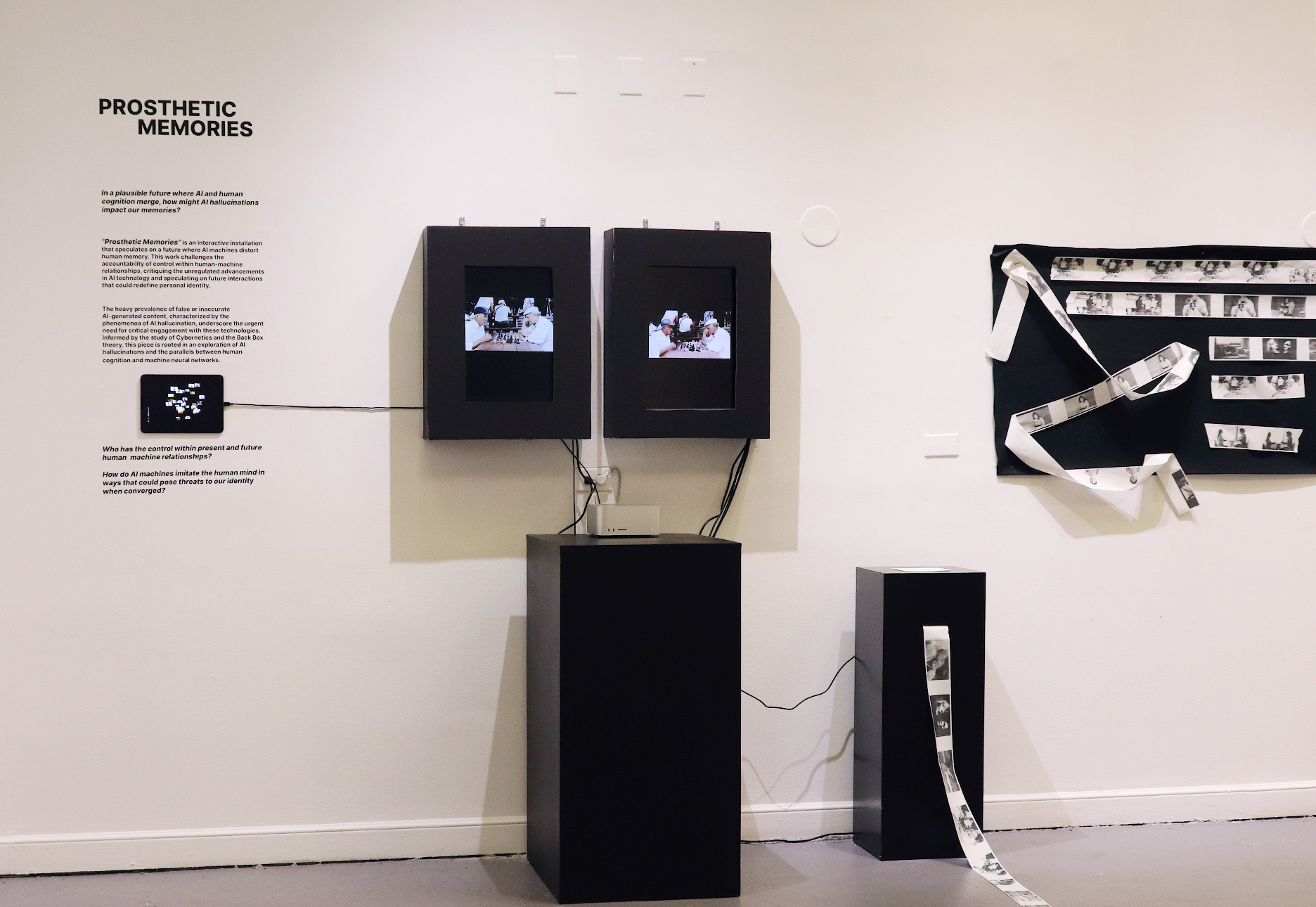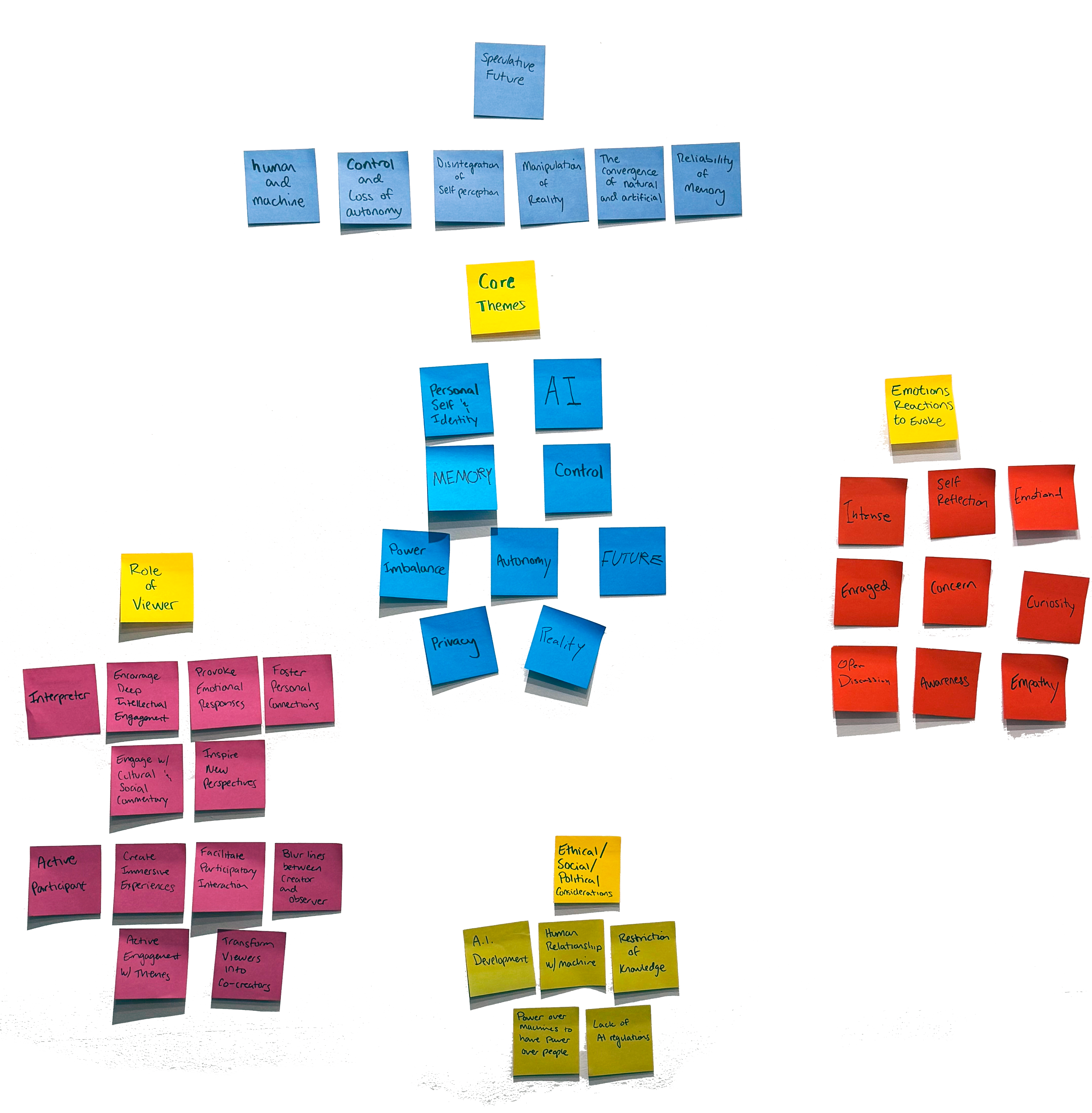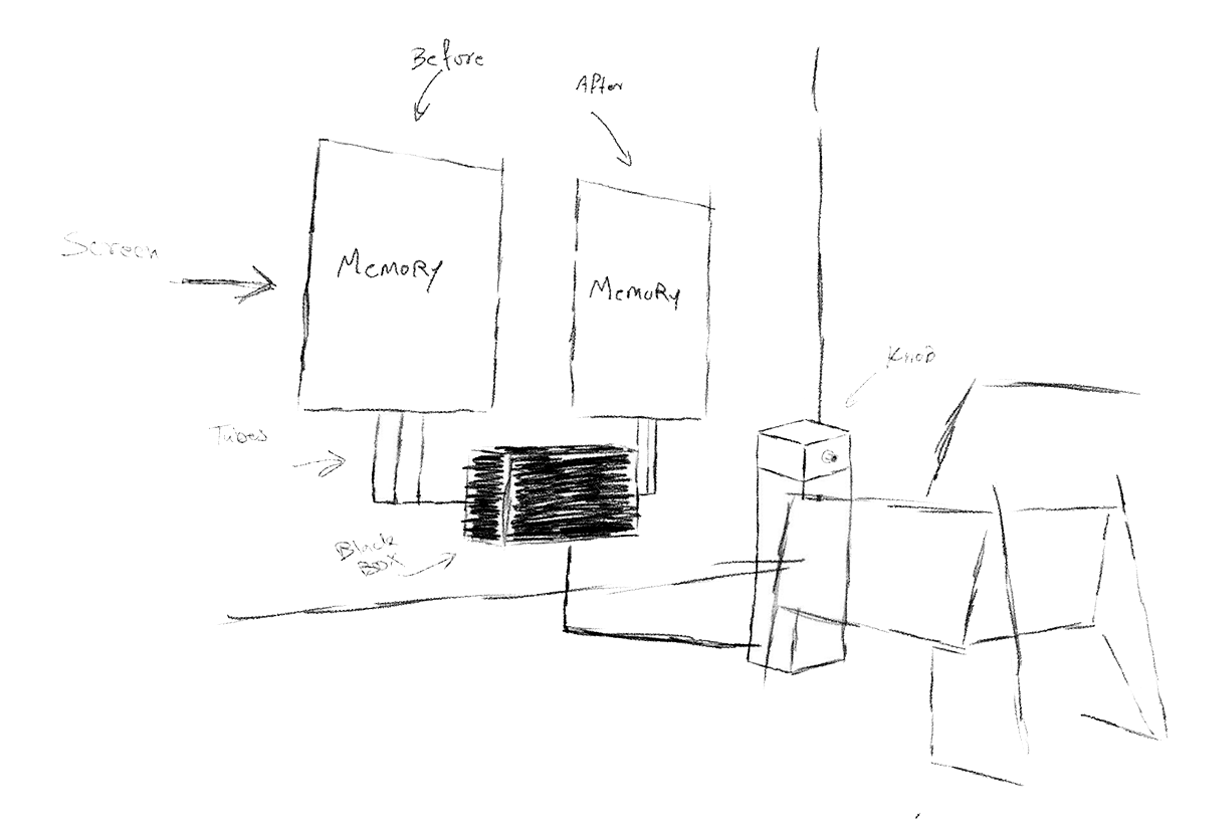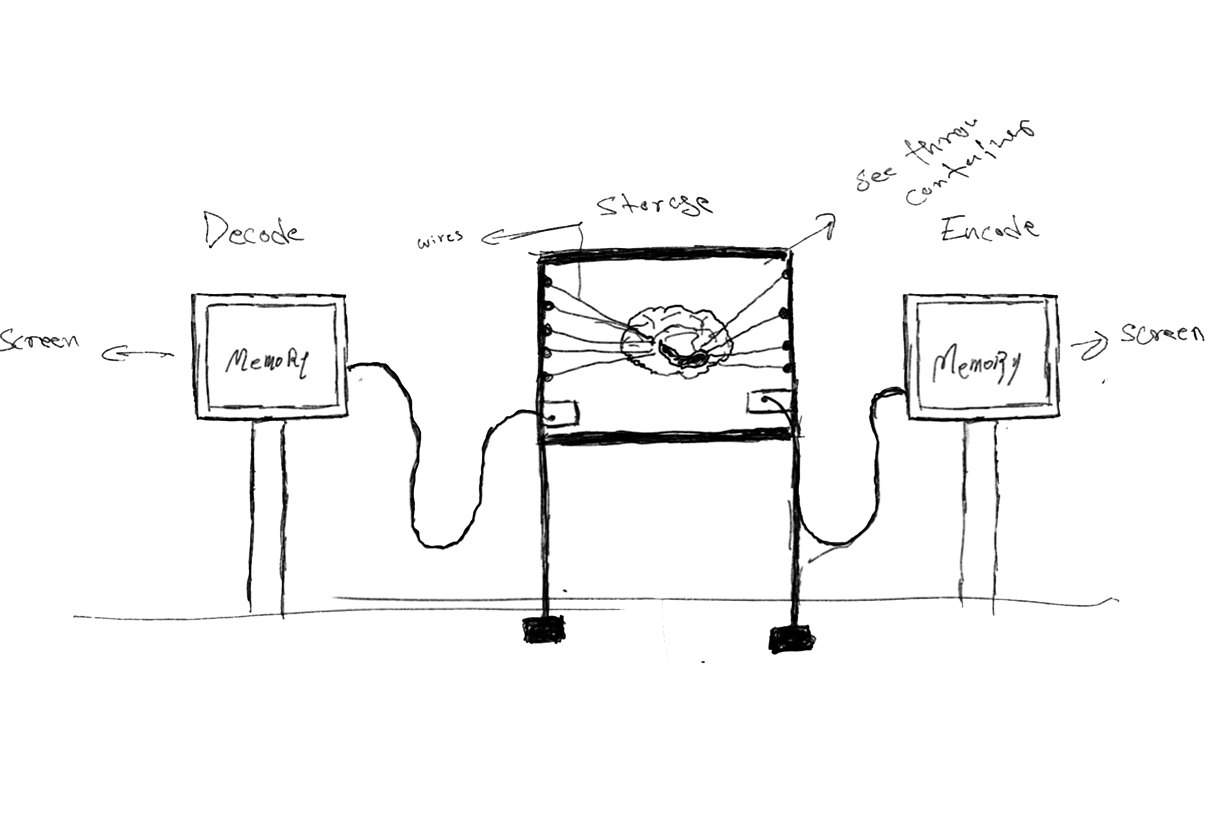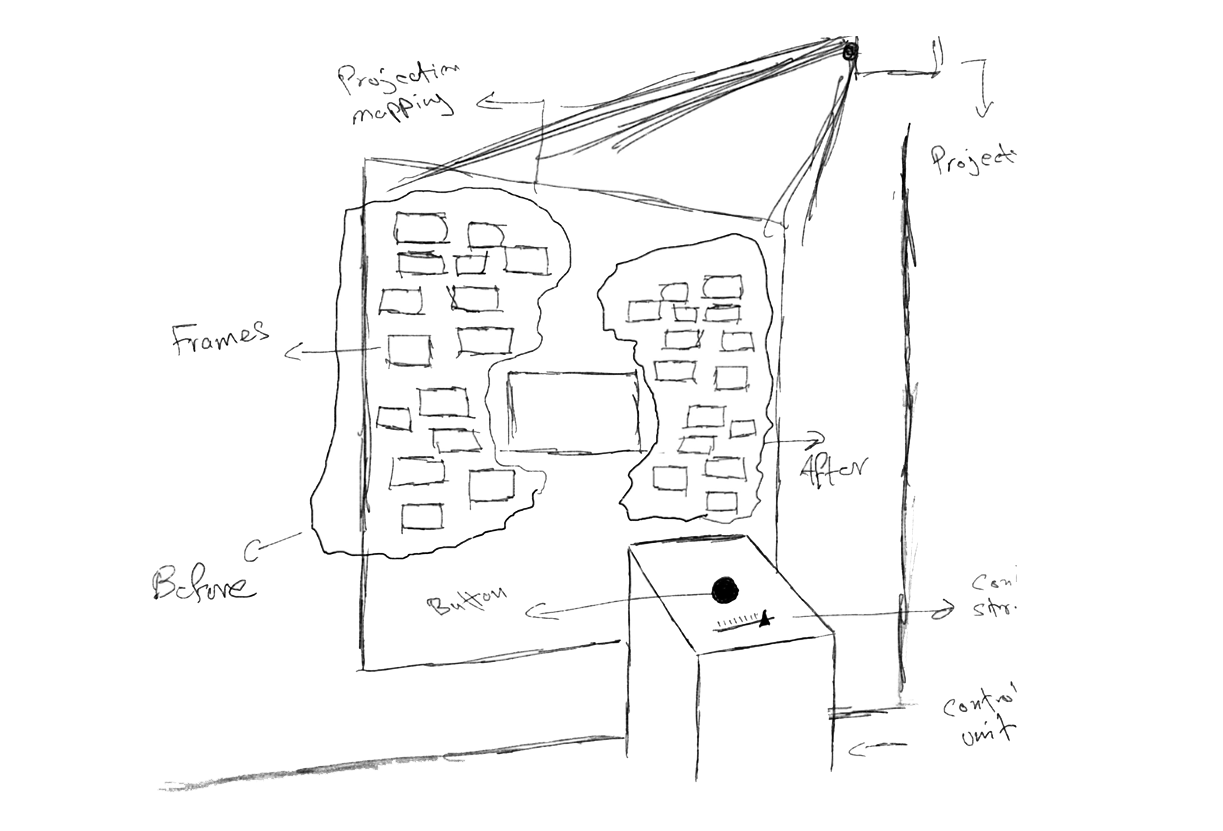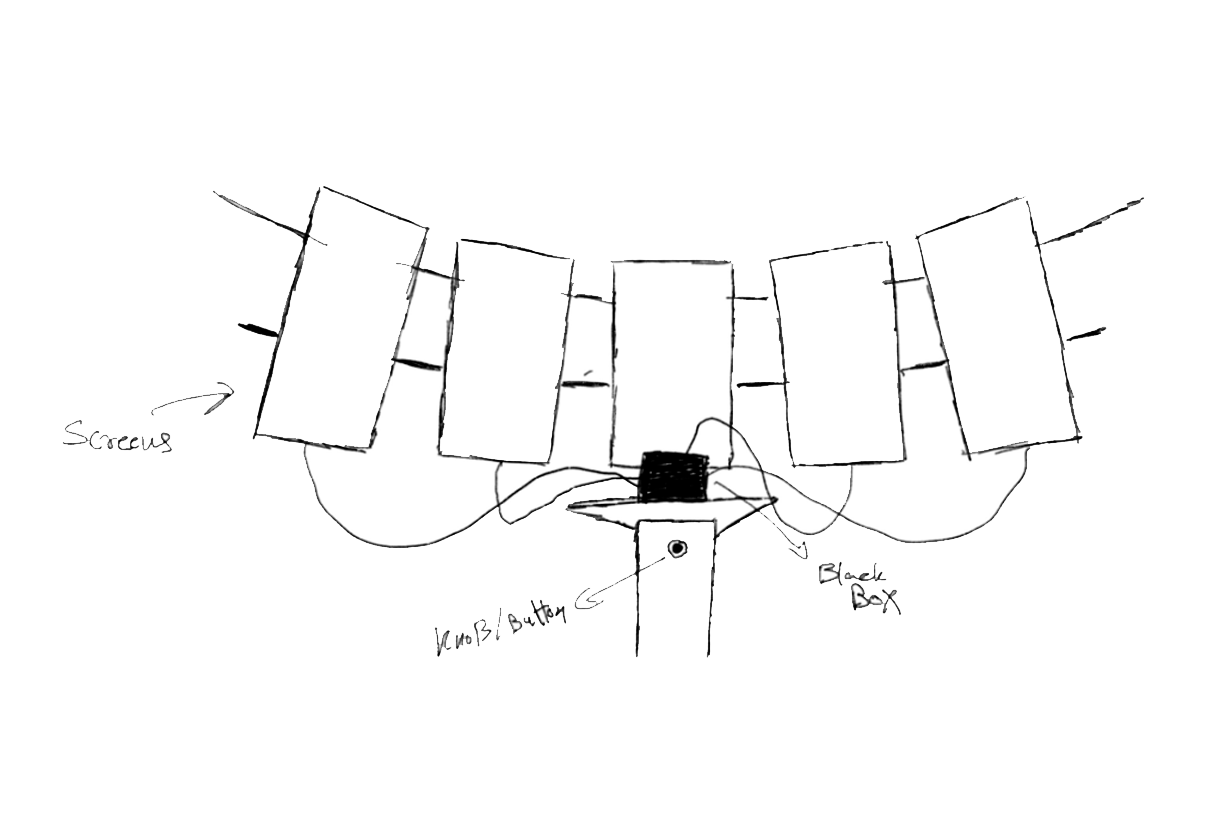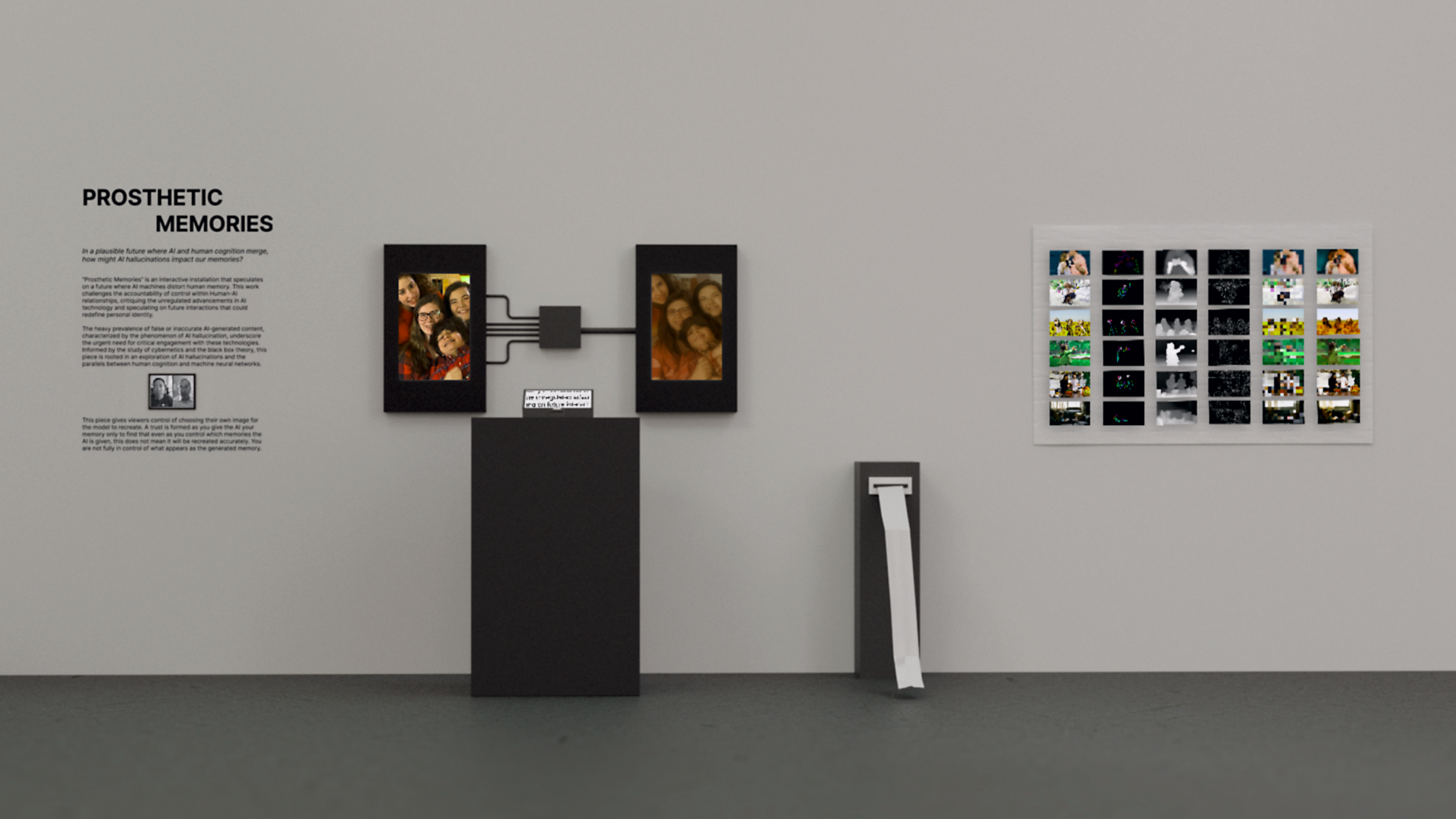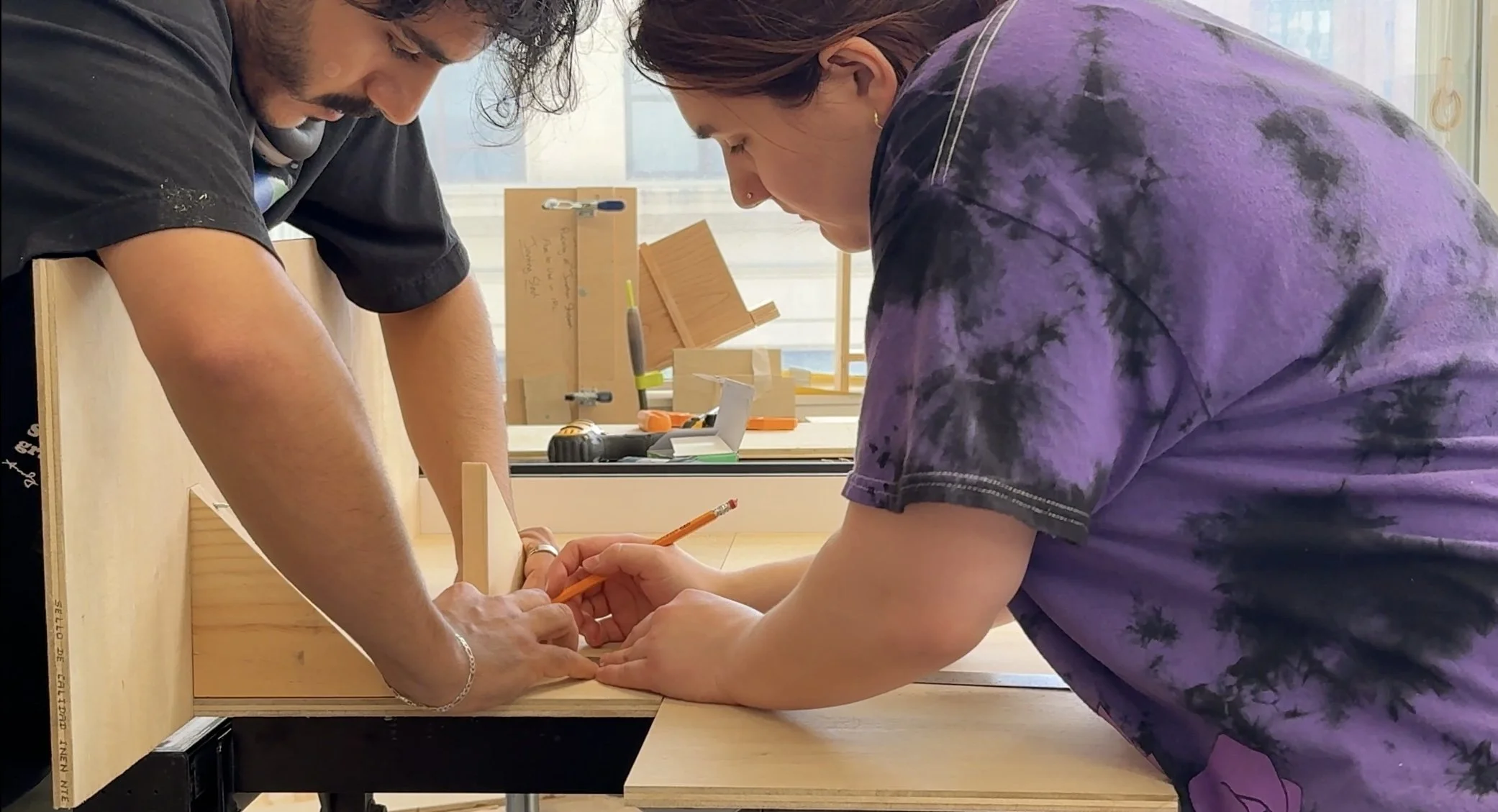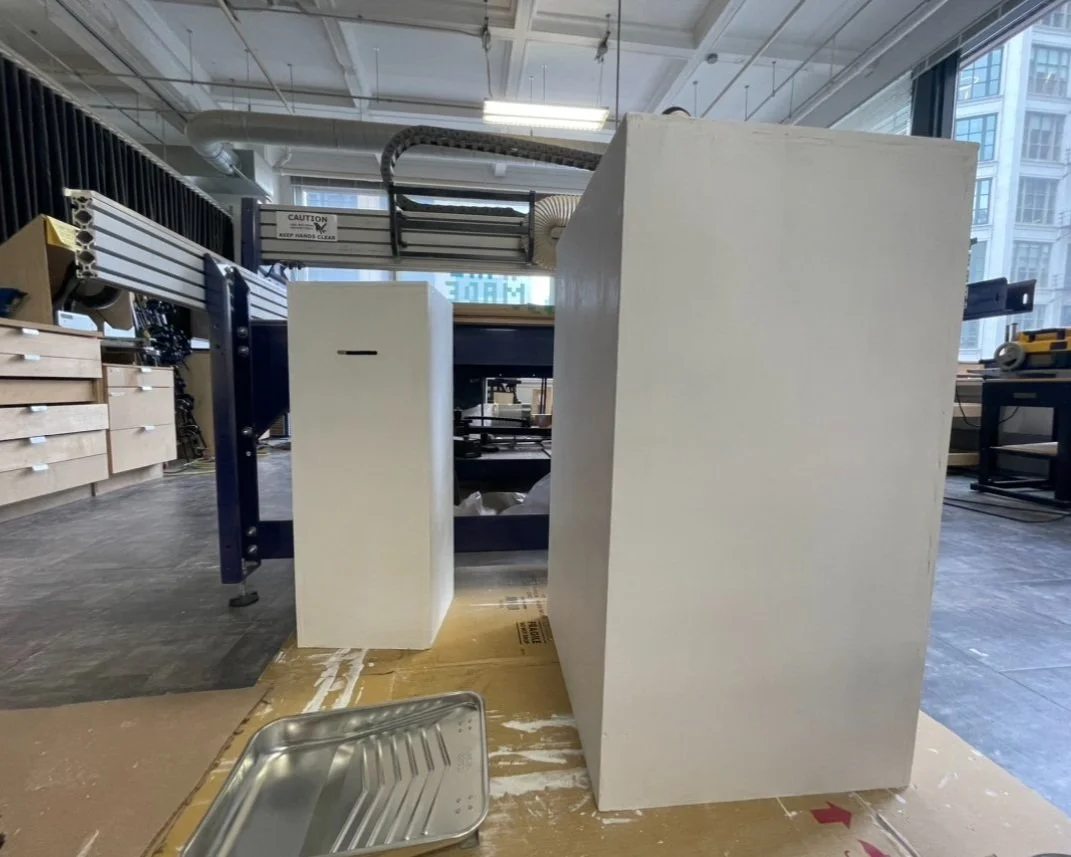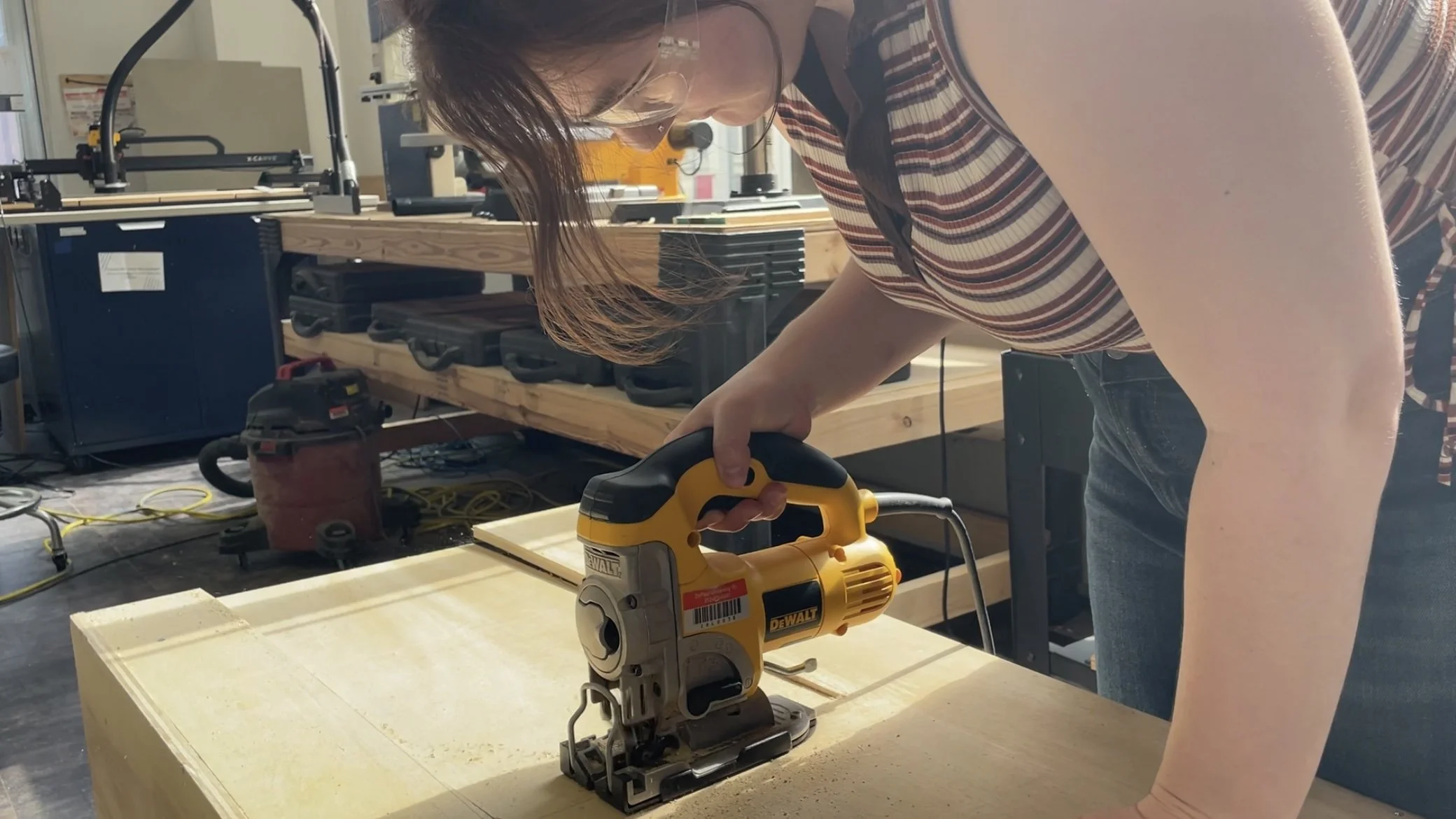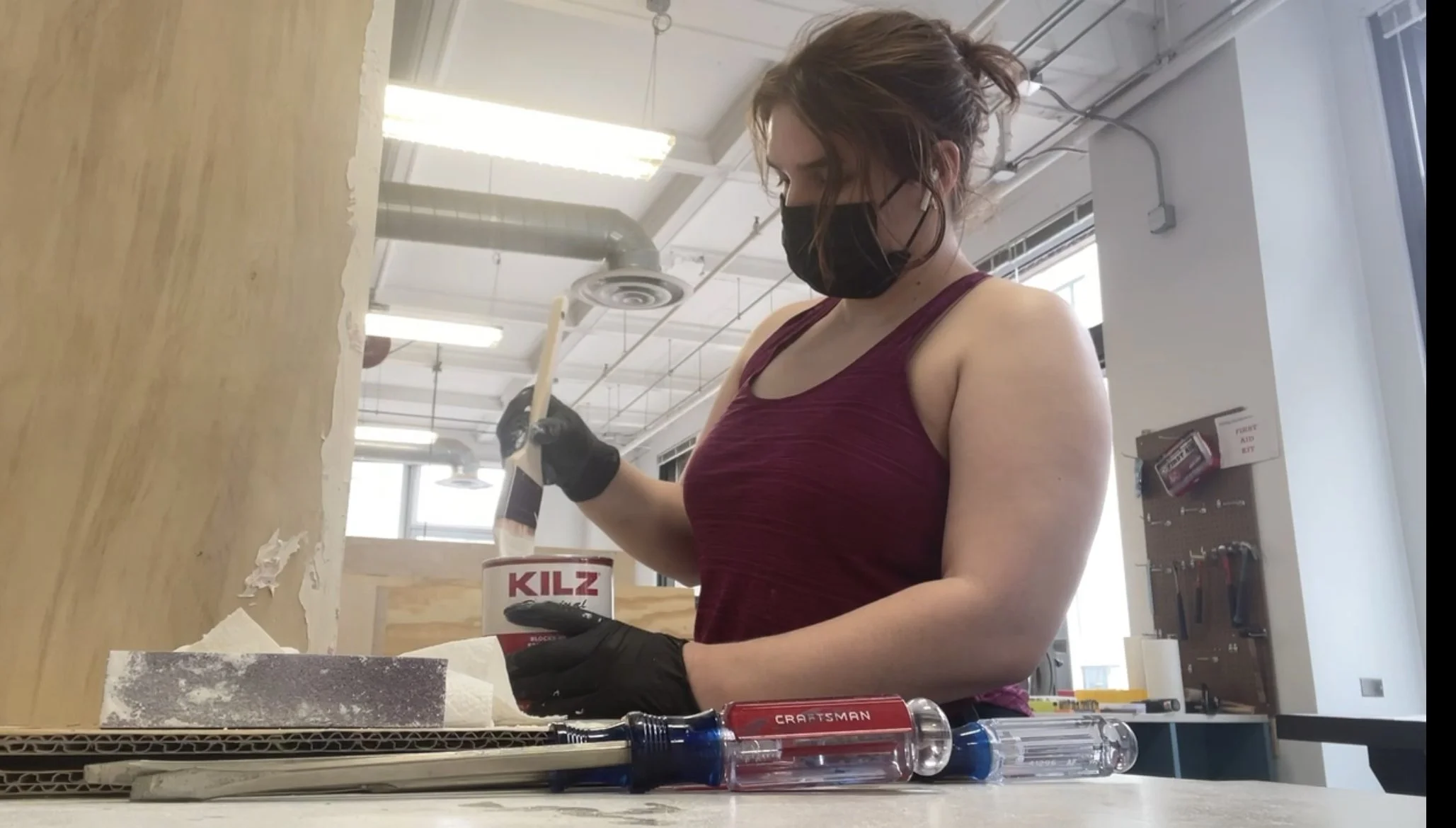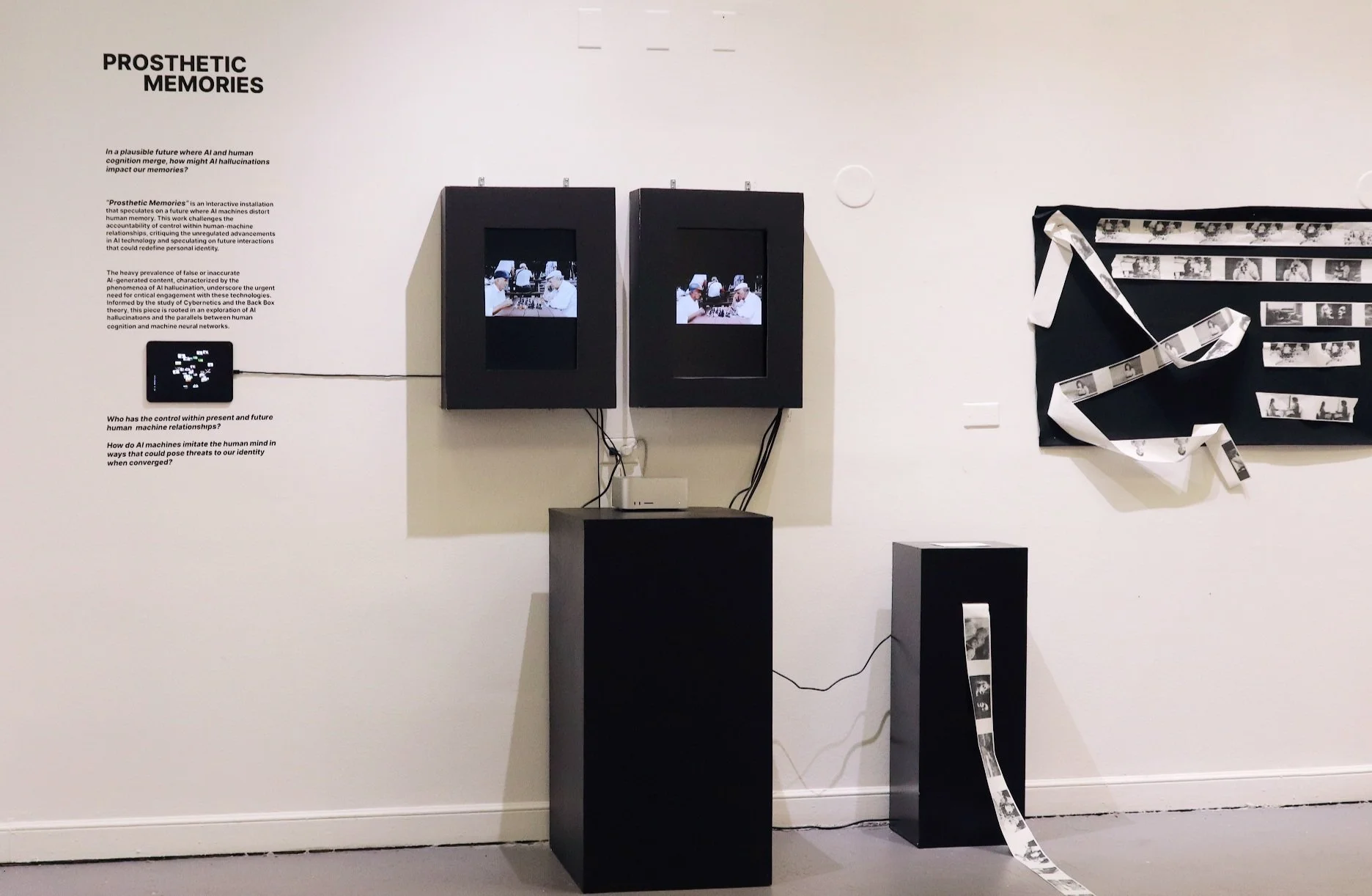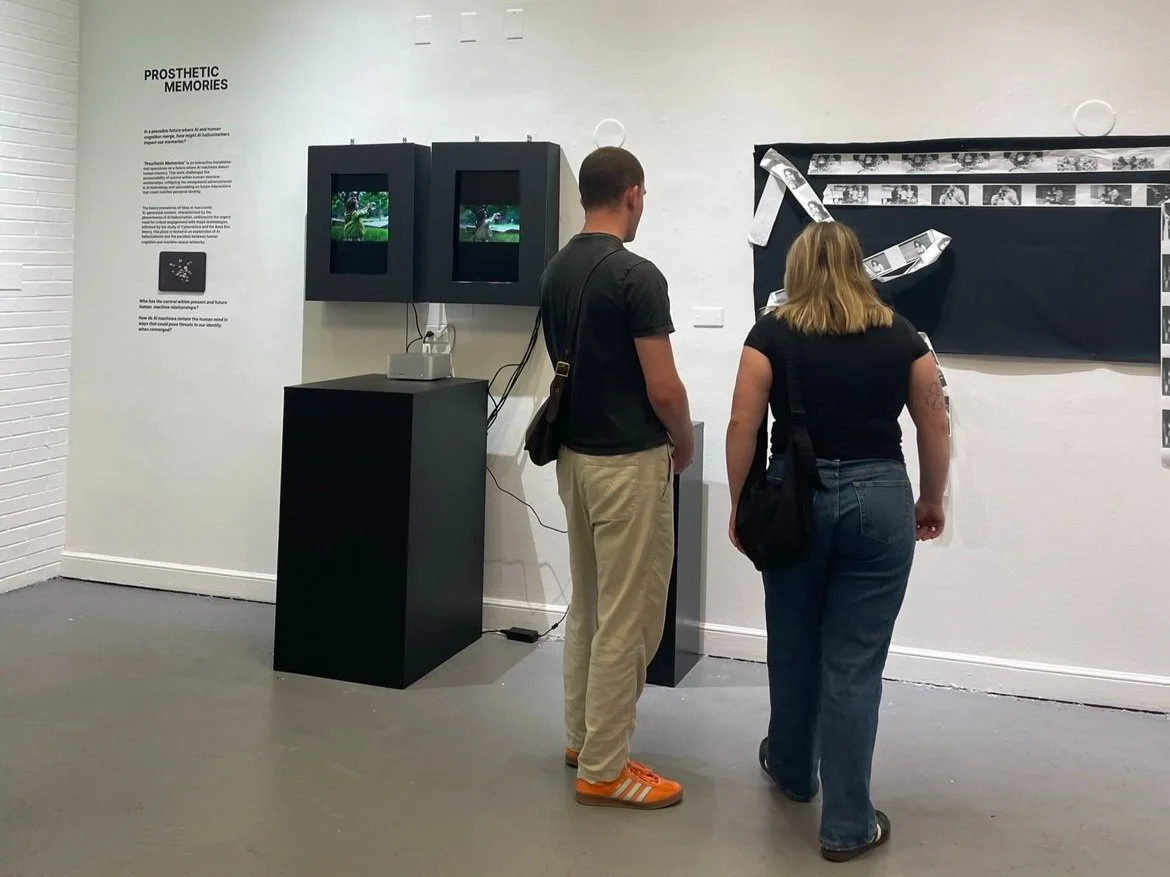AI Technology
-
Exploratory Research
-
Speculative Future Design
-
AI Technology - Exploratory Research - Speculative Future Design -
Prosthetic Memories
In a plausible future where AI and human cognition merge, how might AI hallucinations impact our memories?
Prosthetic Memories is an interactive installation that speculates on a future where AI machines distort human memory. This work challenges the accountability of control within human-machine relationships, critiquing the unregulated advancements in AI technology and speculating on future interactions that could redefine personal identity.
The heavy prevalence of false or inaccurate AI-generated content, characterized by the phenomenoa of AI hallucination, underscore the urgent need for critical engagement with these technologies. Informed by the study of Cybernetics and the Back Box theory, this piece is rooted in an exploration of AI hallucinations and the parallels between human cognition and machine neural networks.
Overview
My creative process is adaptable to the unique demands of each project, following a structured progression: inquiry and research, concept and narrative development, and iterative refinement through feedback.
For this project, primary research was prioritized due to the limited existing precedents exploring the replication of human memory through AI tools. Conducting various experiments within our primary research allowed for enriched data and thematic signals that of which informed the final construction of the piece.
Another key aspect of the process was designing the installation, which aimed to transform complex data and concepts into a physical experience that emotionally resonated with audiences and sparked meaningful discussion.
Project Details
Prosthetic Memories was exhibited in the Design Museum of Chicago in June 2024.
Project Duration: 5 months
Collaborators: Ammar Alghamdi
Key Takeaways
open-source AI models exploration
statistical significance testing
woodworking & construction
speculative design methodologies
exhibit planning & installation
Inquiry & Research
Research Question: In a plausible future where AI and human cognition merge, how might AI hallucinations impact our memories?
The background of this research is rooted in the exponential growth of AI and its increasing entanglement with aspects of human life. Episodic memory—which involves recollecting specific events, locations, and times—is fundamental to one's sense of self. The potential of AI to enhance, alter, or even distort these memories introduces profound ethical considerations that fascinated our team and ultimately became our domain of inquiry.
Primary Research
Stage I: Closed-Source Generative AI
Stage II: Open-Source AI Diffusion Model
Stage III: Qualitative Interviews
A comprehensive review of existing literature reveals a growing interest in the intersection of AI and memory. Scholarly works in machine learning, digital memory, cognitive science, and cybernetics provide a foundation for understanding the current landscape and its limitations–such as the black boxes within human cognition and AI system operations. However, the phenomenon of AI hallucination is under-explored, requiring further primary research to be conducted for our speculative grounding.
Utilizing the experimental process of stage II, the qualitative interviews work to find the human interpretations and responses to the generated images from the AI diffusion model. This was completed through three interviews with volunteer participants. The participants gave consent for us to utilize images from their social media to act as their memories fed into the stable diffusion model.
This allowed us to regenerate randomly chosen memories of the participants among the accessible images. With the images generated in this way, the participants will not be aware of which memories were recreated, allowing them to react in a raw and genuine manner when viewing the new images.
Concept & Narrative
Reflecting on our research findings was crucial in uncovering the core of our final installation. Through multiple sessions of thematic analysis and brainstorming, we not only solidified the concept but also defined the role of the viewers in the installation experience.
Iterations & Feedback
3D Installation Mock-Ups
Installation Construction
Final Installation & Exhibit Discussion
Challenges & Next Iteration
Although the exhibit attracted a large number of visitors and generated meaningful discussion around our installation, we faced several challenges along the way. The project was designed as an interactive experience, but due to the museum's technological limitations, the interactive element could not function live during the exhibit.
Despite this setback, we plan to recreate the installation with its full interactive capabilities, allowing viewers to upload their own images and watch as the AI model recreates the memory in real time. This next iteration will be showcased at the Jarvis Center at DePaul University in Chicago.
Overall, this project introduced us to new and complex challenges, including constructing an installation, experimenting with AI models, and designing within speculative futures. It provided us a unique opportunity to push our creative boundaries and discover how far our passion for learning could take us.
